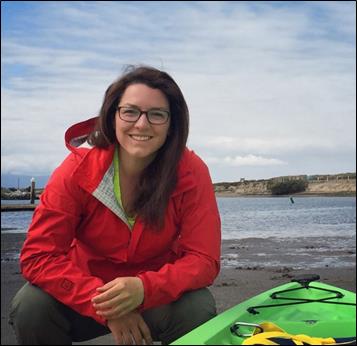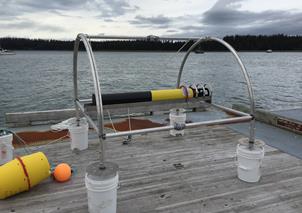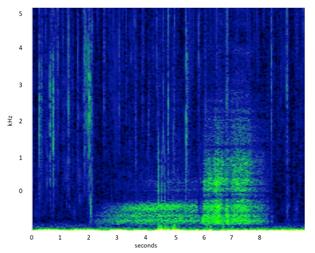Media Included
- Whups and Roars of Glacier Bay - Explore the underwater acoustics of humpback whales and harbor seals.
How loud and how often do harbor seals call in the Beardslee Islands? Do they alter their vocal behavior in the presence of vessel noise?
Project Dates
May 2015—October 2016
Did You Know?
Over 45% of pinniped species (seals and sea lions) mate underwater—and when considering only the true seals, that percentage jumps up to 80%. However, because of the difficulties involved in studying marine mammal underwater behavior, there are a lot of fundamental questions about harbor seal reproductive biology that are yet to be answered.
Introduction

The majority of visitors to Glacier Bay arrive via cruise ship or other motorized vessel. Sound from these vessels travels very efficiently underwater and contributes dramatically to the underwater soundscape. Marine mammals in the Park, such as whales and seals, use acoustic cues for a variety of life functions, including foraging, social interactions, and reproduction. The presence of anthropogenic noise from vessels has the potential to hinder successful communication between individuals.
There is a large, but declining, population of harbor seals that reside in Glacier Bay. Harbor seals mate underwater, and during the breeding season, males establish underwater territories and use acoustic signals to defend these areas. These vocalizations are known as “roars.” Roars are low frequency vocalizations that directly overlap with the low frequency noise associated with vessels.
The purpose of this study is the investigate harbor seal vocal behavior during the breeding season and assess the effects of vessel noise on vocal parameters. The researchers will address several questions with the data that they collect. How loud are harbor seal vocalizations? How often does an individual call? Where are harbor seals vocalizing? How does vessel noise impact vocal behavior? The breeding season is a critical time for harbor seals and changes in breeding behavior as a function of noise could disrupt reproductive success of individuals. A better understanding of how harbor seals respond to underwater sound will help Park managers understand the acoustic habitat requirements of harbor seals and make informed decisions on vessel management.
Methods

Four autonomous underwater hydrophones (AUHs) were positioned east of Strawberry Island to monitor the vocal behavior of harbor seals in the Beardslee Islands. These hydrophones, or underwater microphones, collect continuous acoustic data up to 7,500 Hz, which fully covers the range of harbor seal vocalizations, as well as noise from vessels. Each AUH features a highly precise clock, which will allow researchers to locate vocalizing seals. These locations will be used to create maps of underwater acoustic territories of individual males.
The acoustic data from the hydrophones will be supplemented by shore-based visual observations during the summer. Scan sampling will provide information about harbor seal surface locations, surface behaviors, and vessel presence. The designed sampling schedule allows multiple scans to be collected at various light levels over the course of the day.
Findings

The researchers only recently placed the hydrophones near Strawberry Island (May 2015) and will be waiting until October 2015 to retrieve them. They will then be able to listen to the recordings and visualize the sounds to draw conclusions about harbor seal behavior during the breeding season in the Beardslee Island area. This acoustic data, coupled with the behavioral observations made during the summer months, will give insight into the size of male underwater territories, how loud the males are vocalizing, how often the males are vocalizing, and how the presence of noise from vessels alters their behavior. The hydrophones will go back into the water the following year, from April to October of 2016, to collect more acoustic data. By adding a second year of data collection to the project, the researchers will have much higher confidence in the results the get from their analyses.
Learn More
Glacier Bay Research: https://www.nps.gov/glba/learn/scienceresearch.htm
Harbor Seals in Glacier Bay: https://www.nps.gov/glba/learn/nature/seal.htm
Parks Lab Research: http://parkslab.syr.edu
Information on Underwater Sound: http://www.dosits.org
Last updated: September 13, 2016
